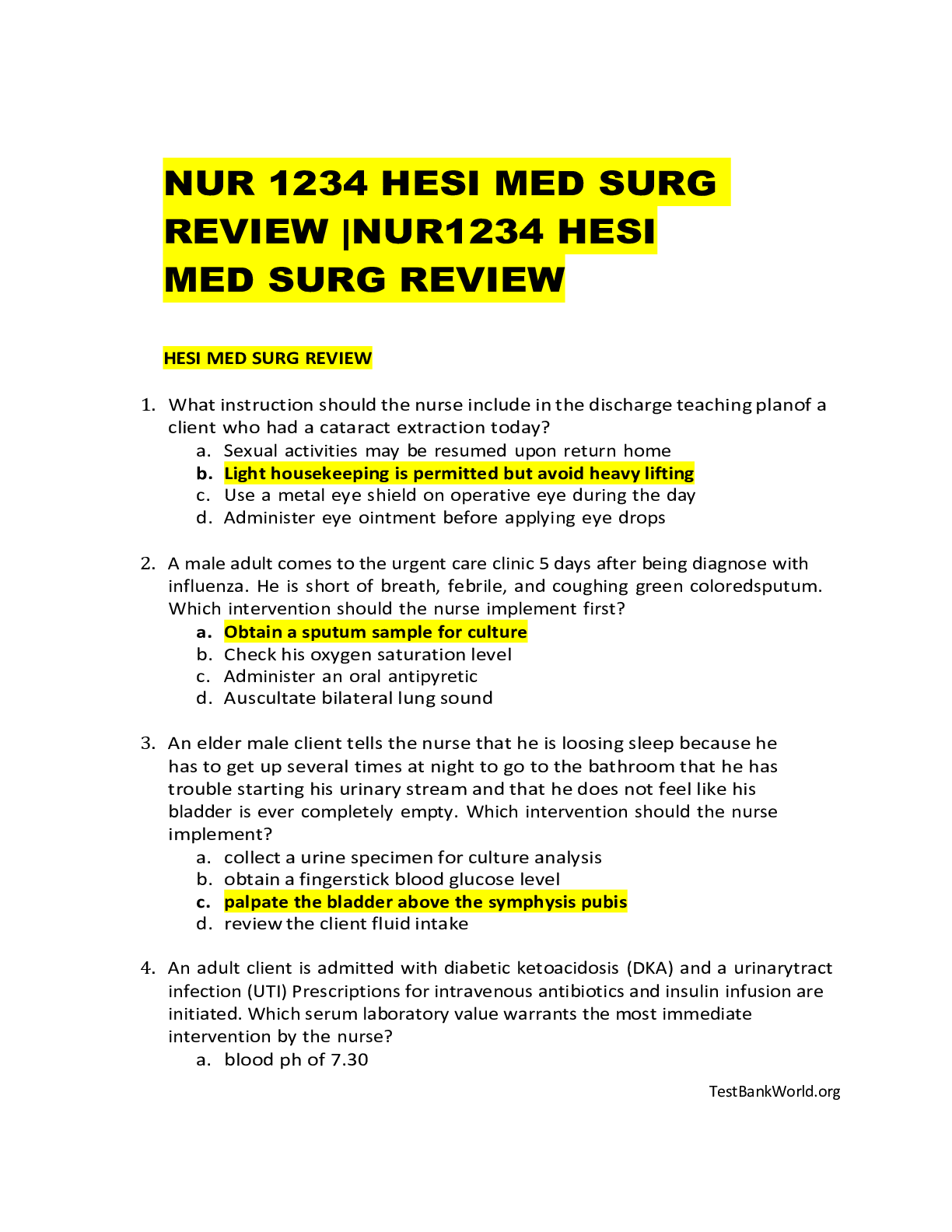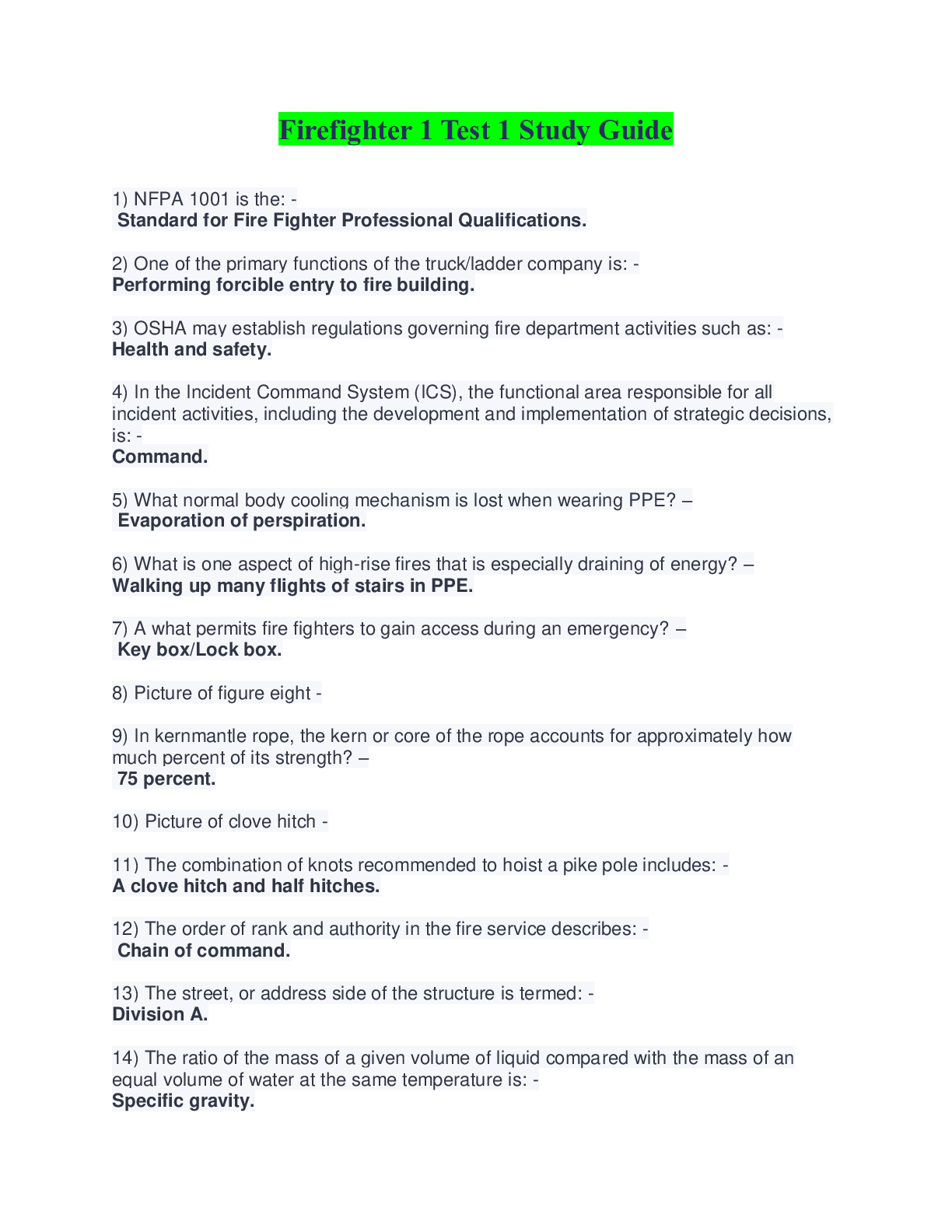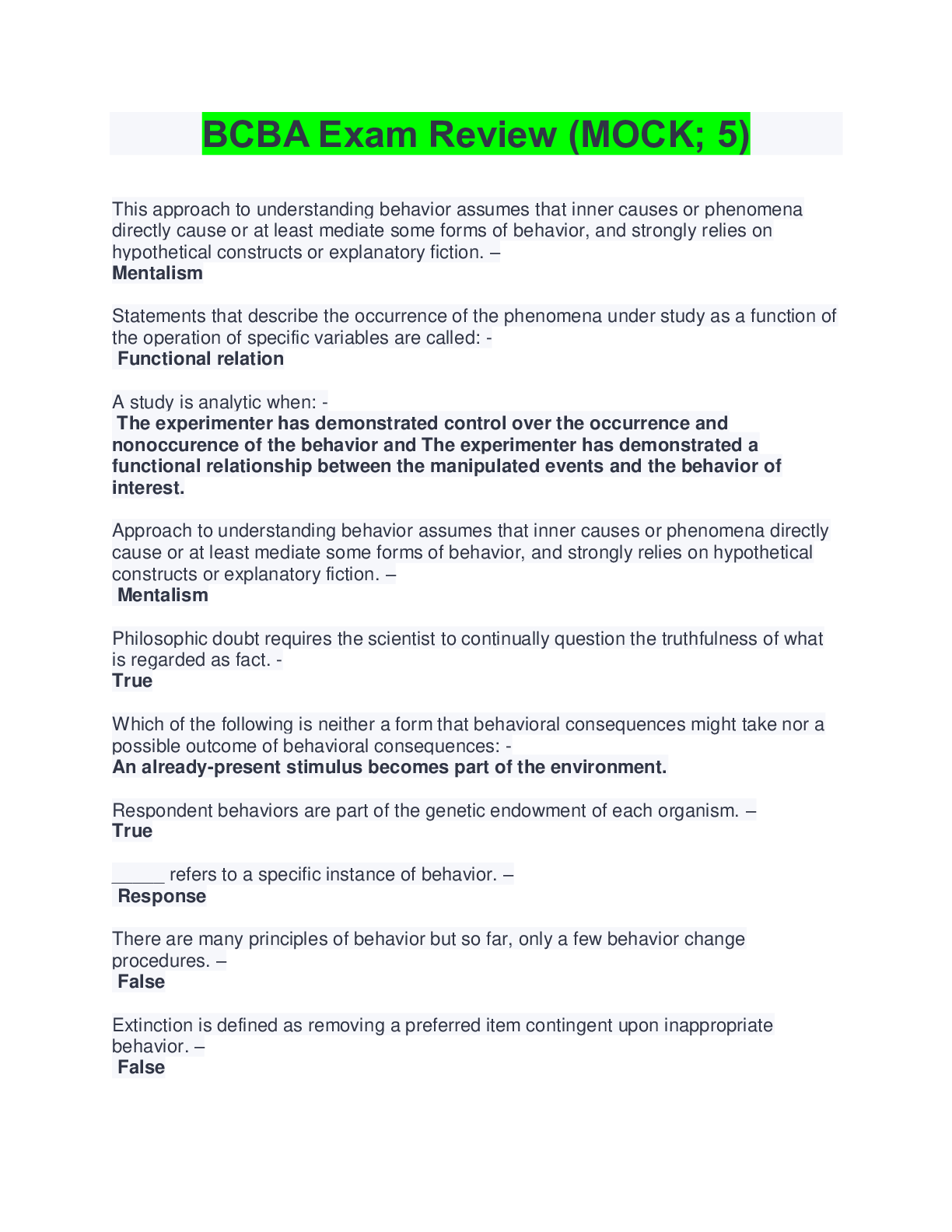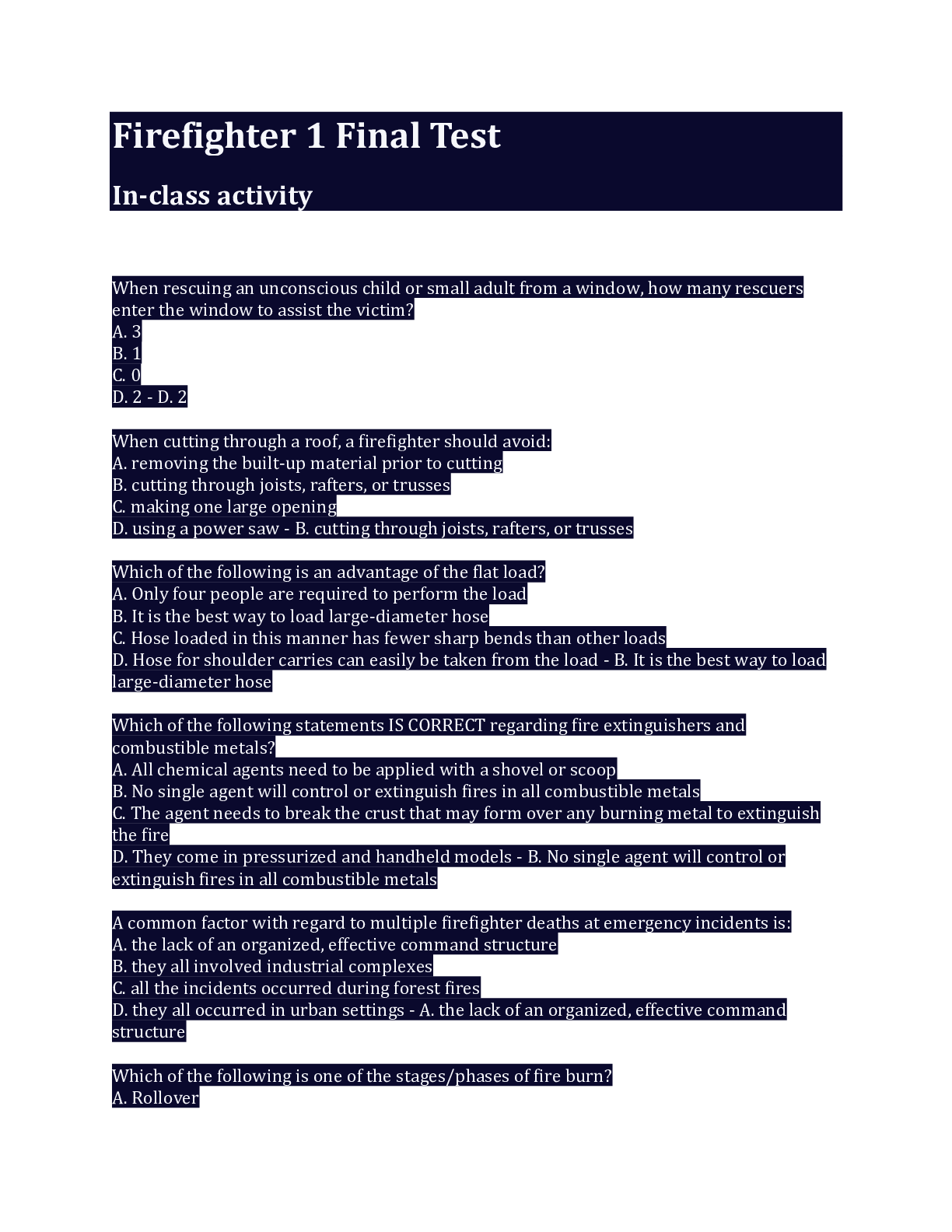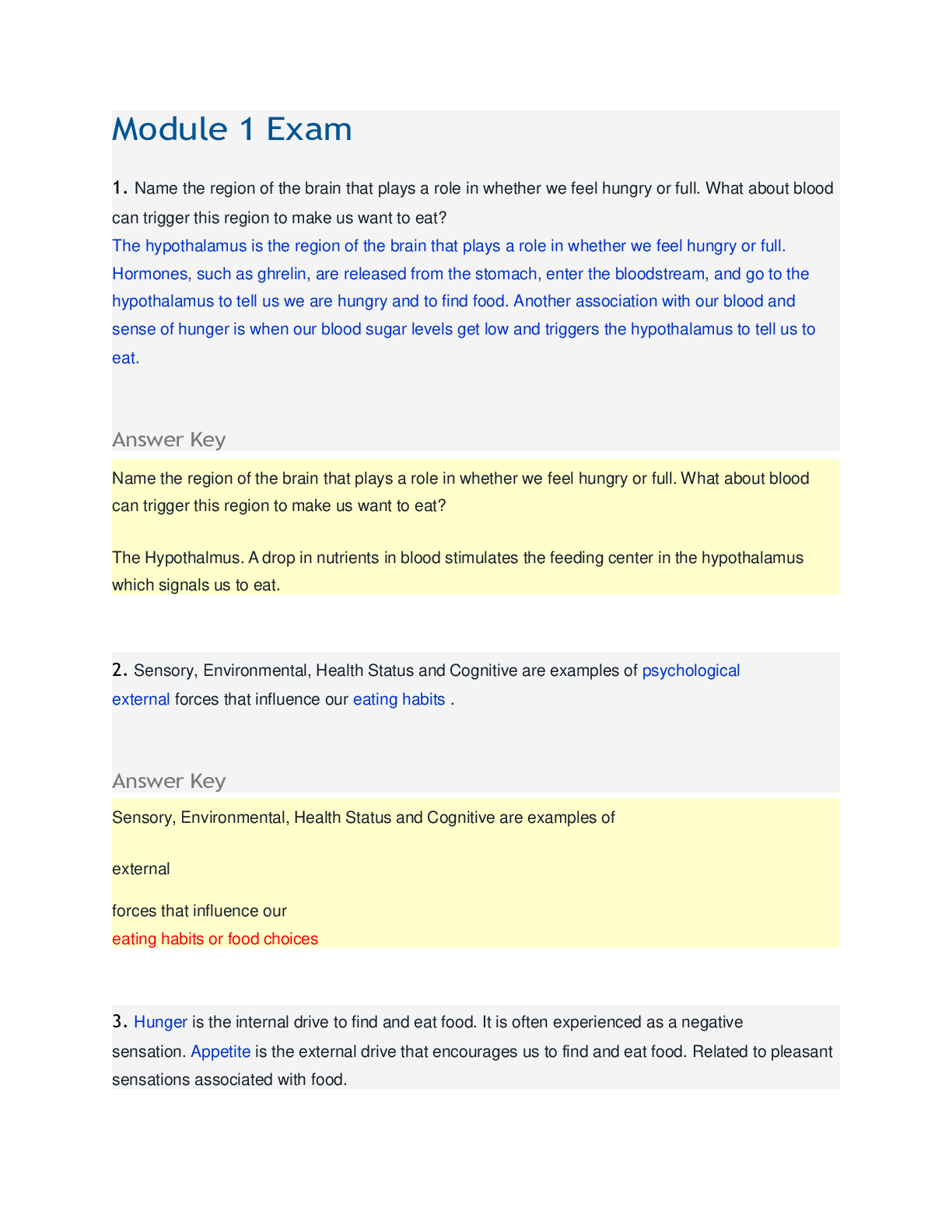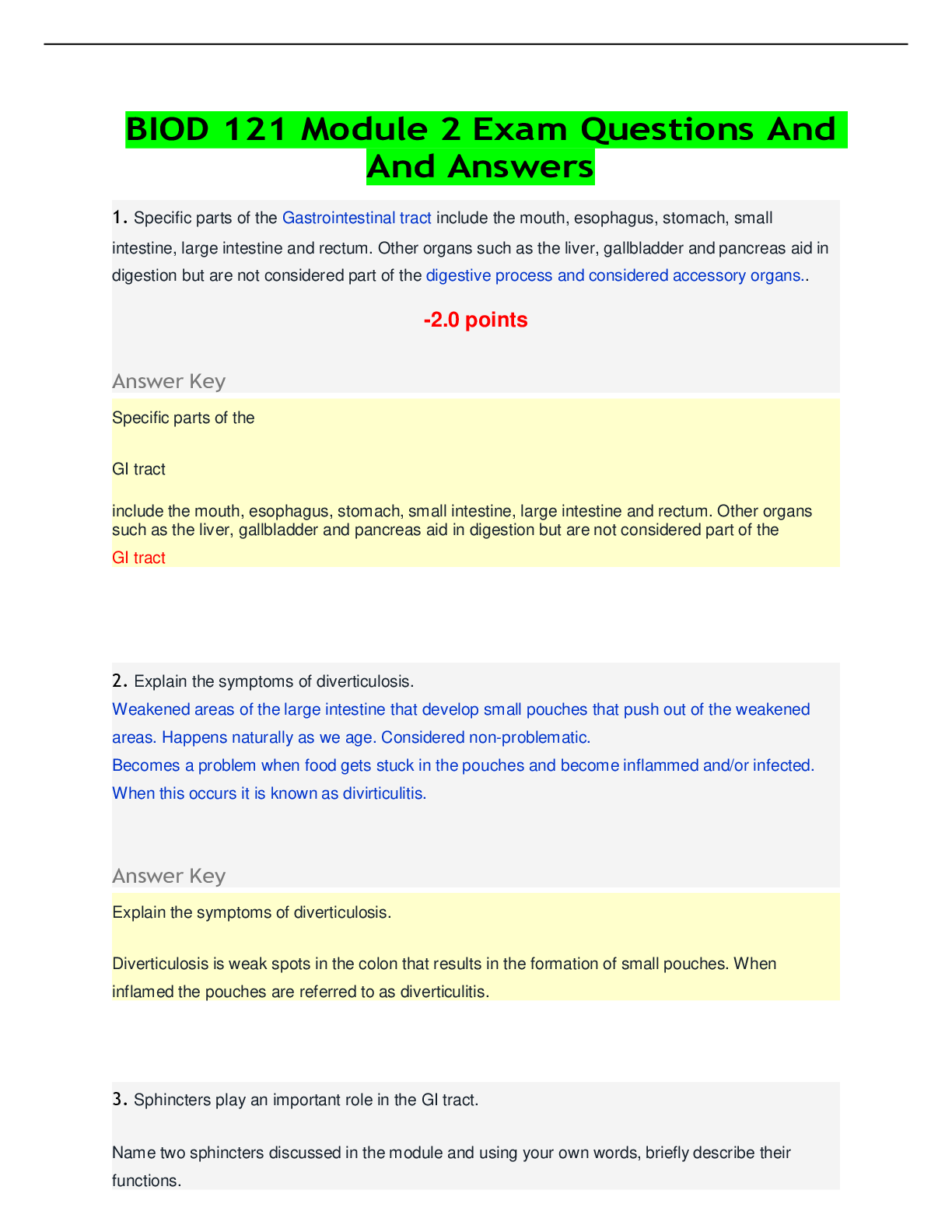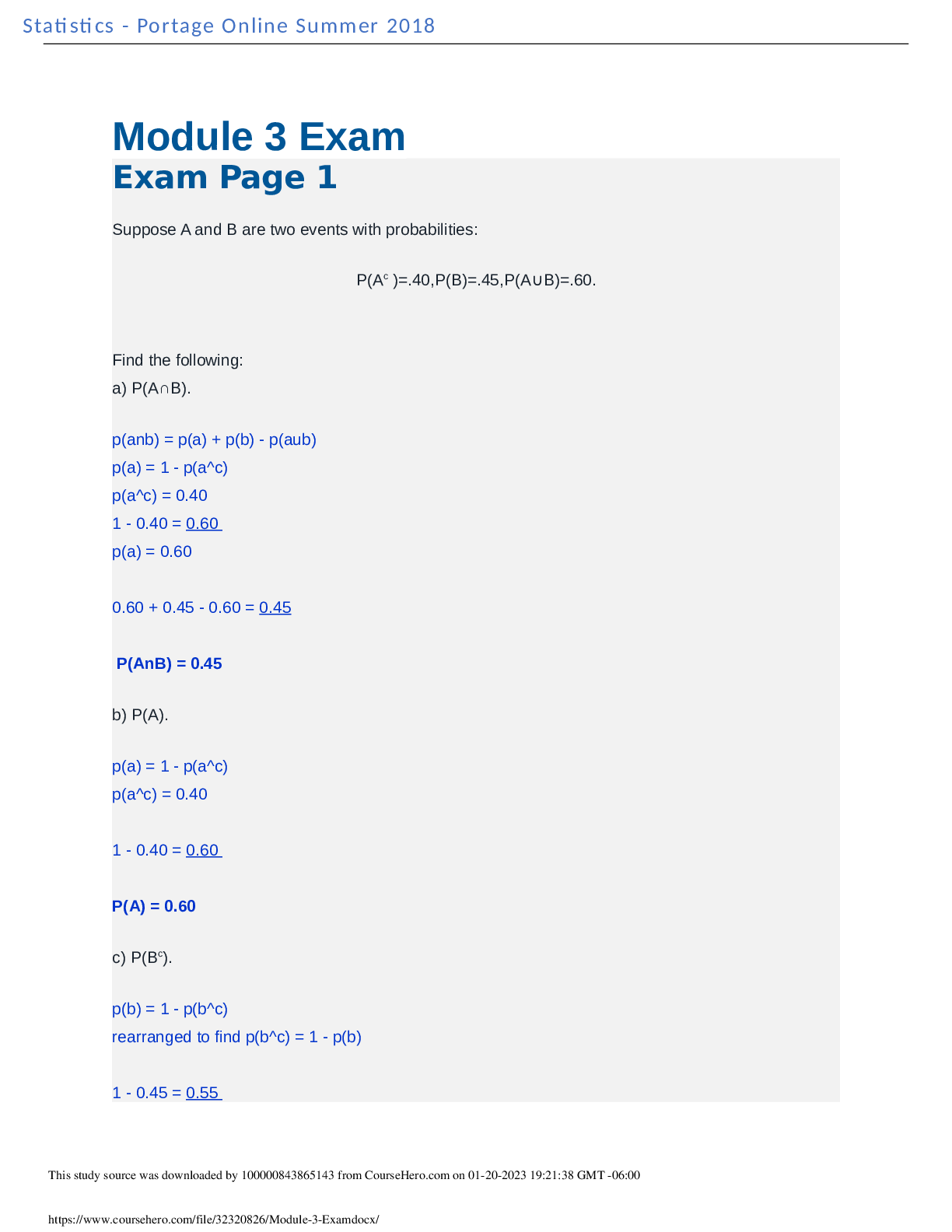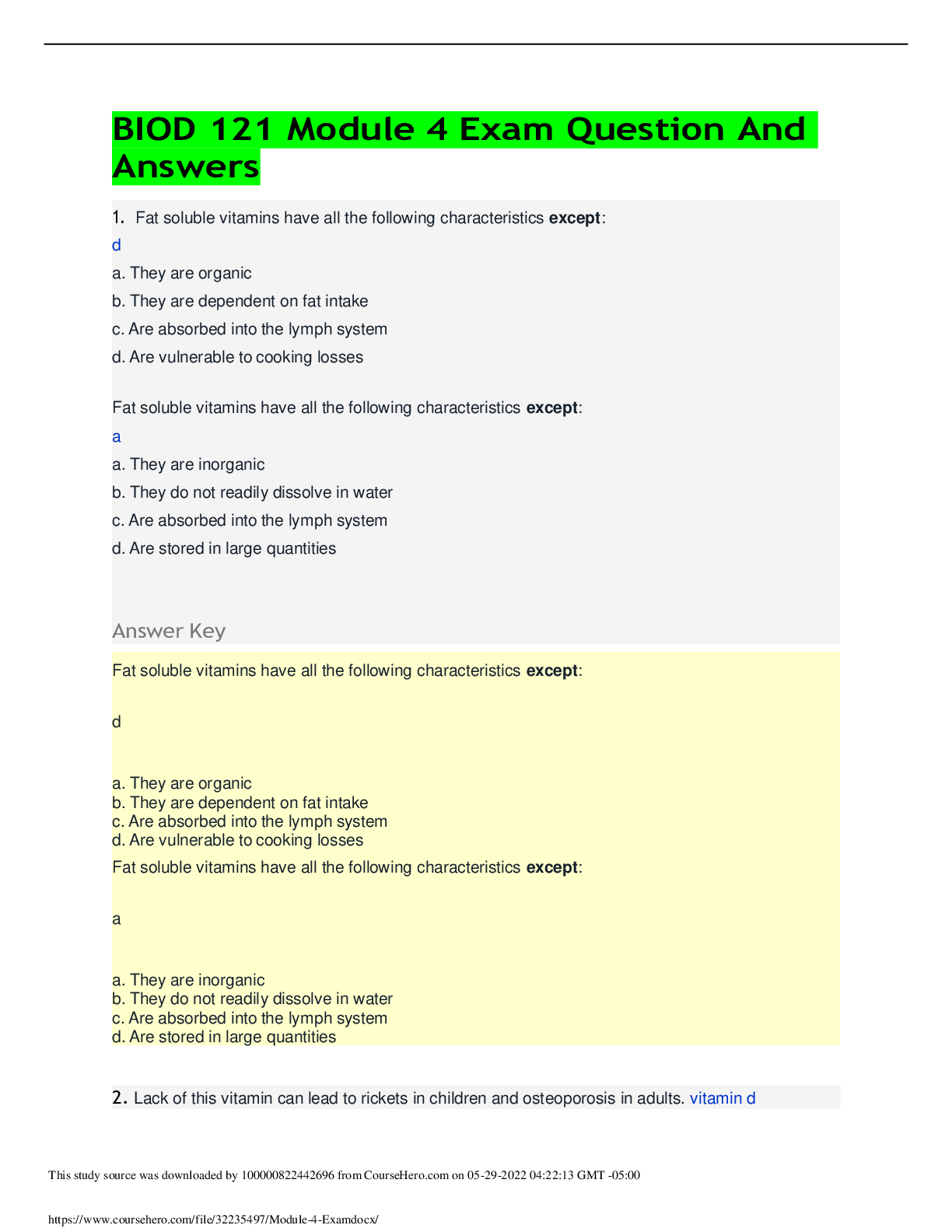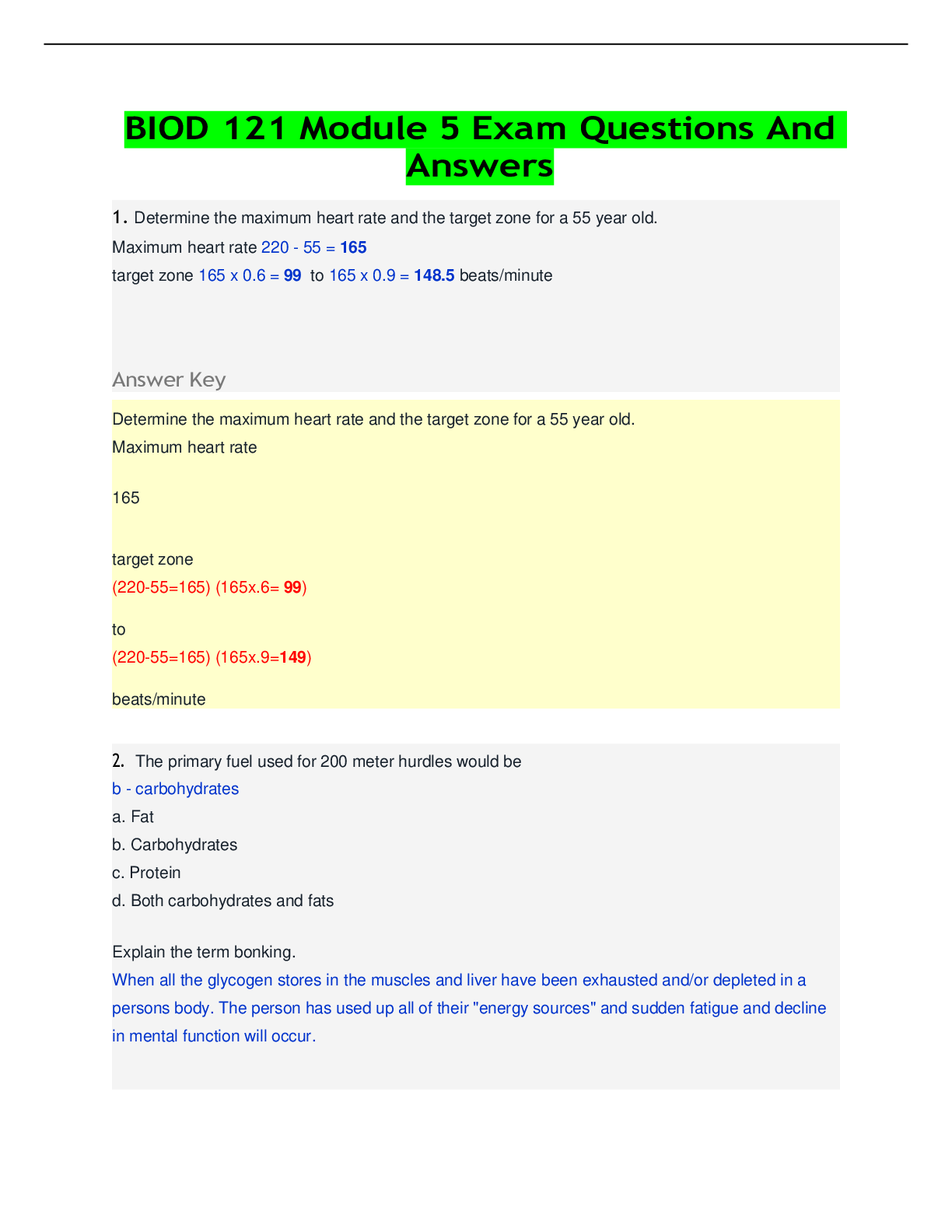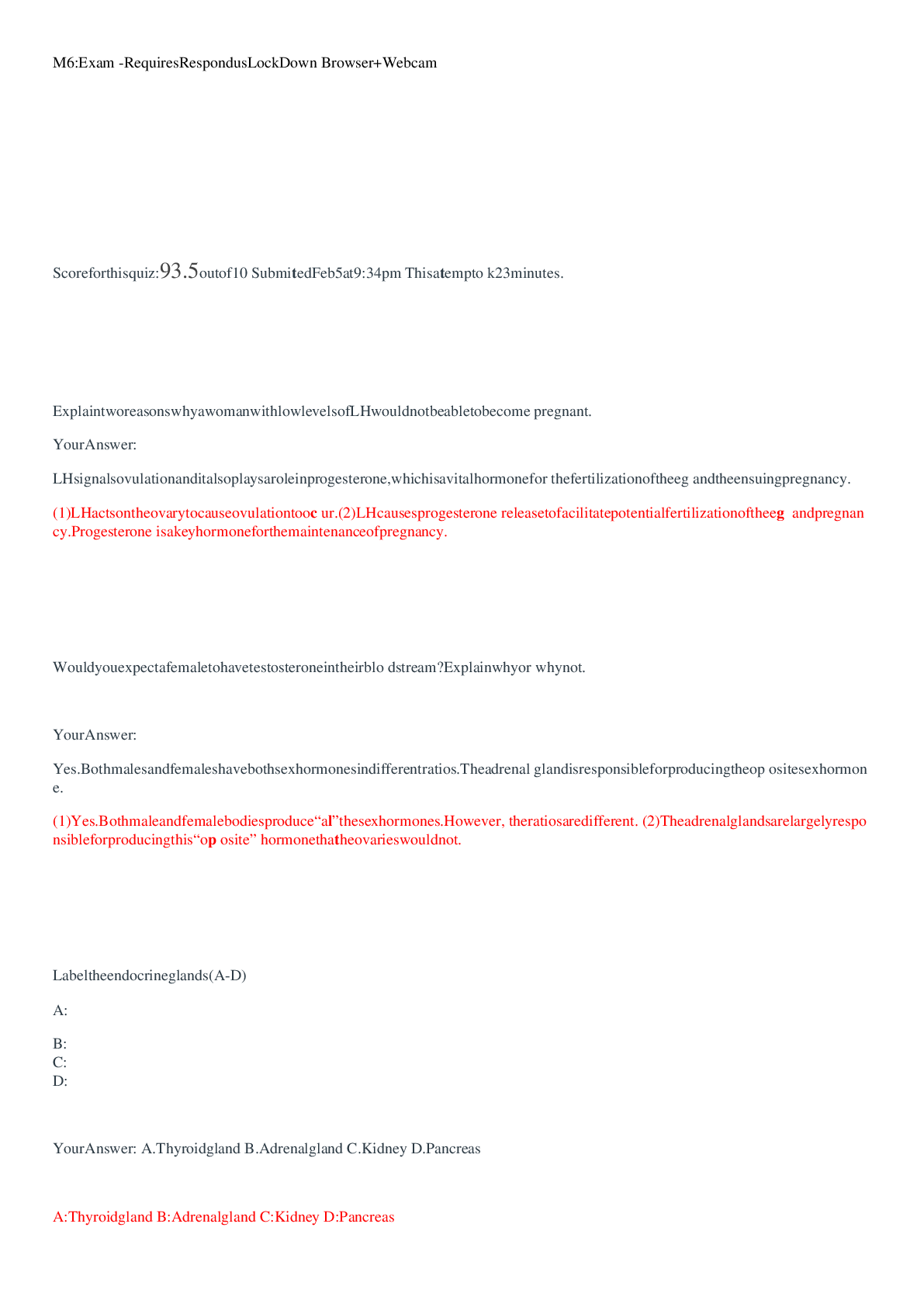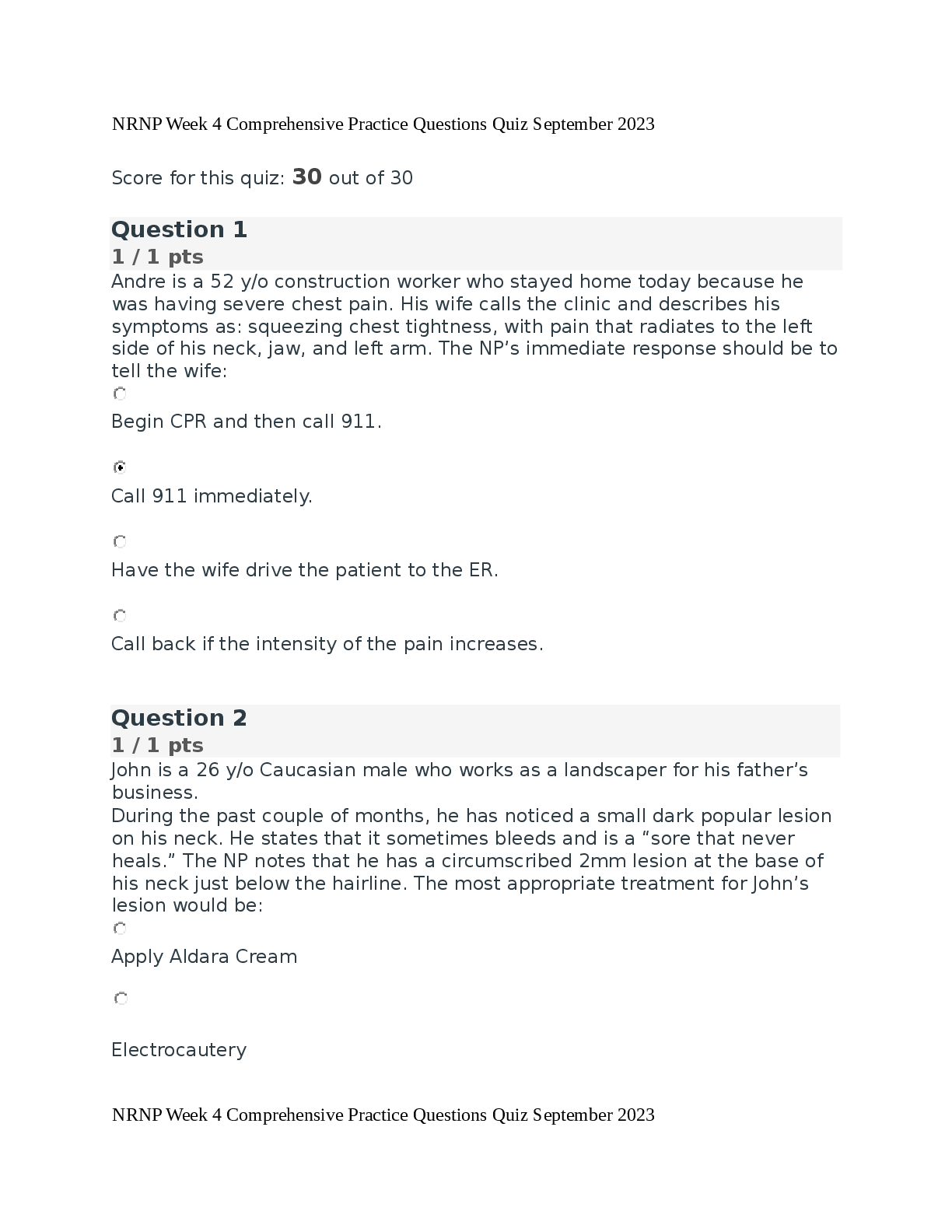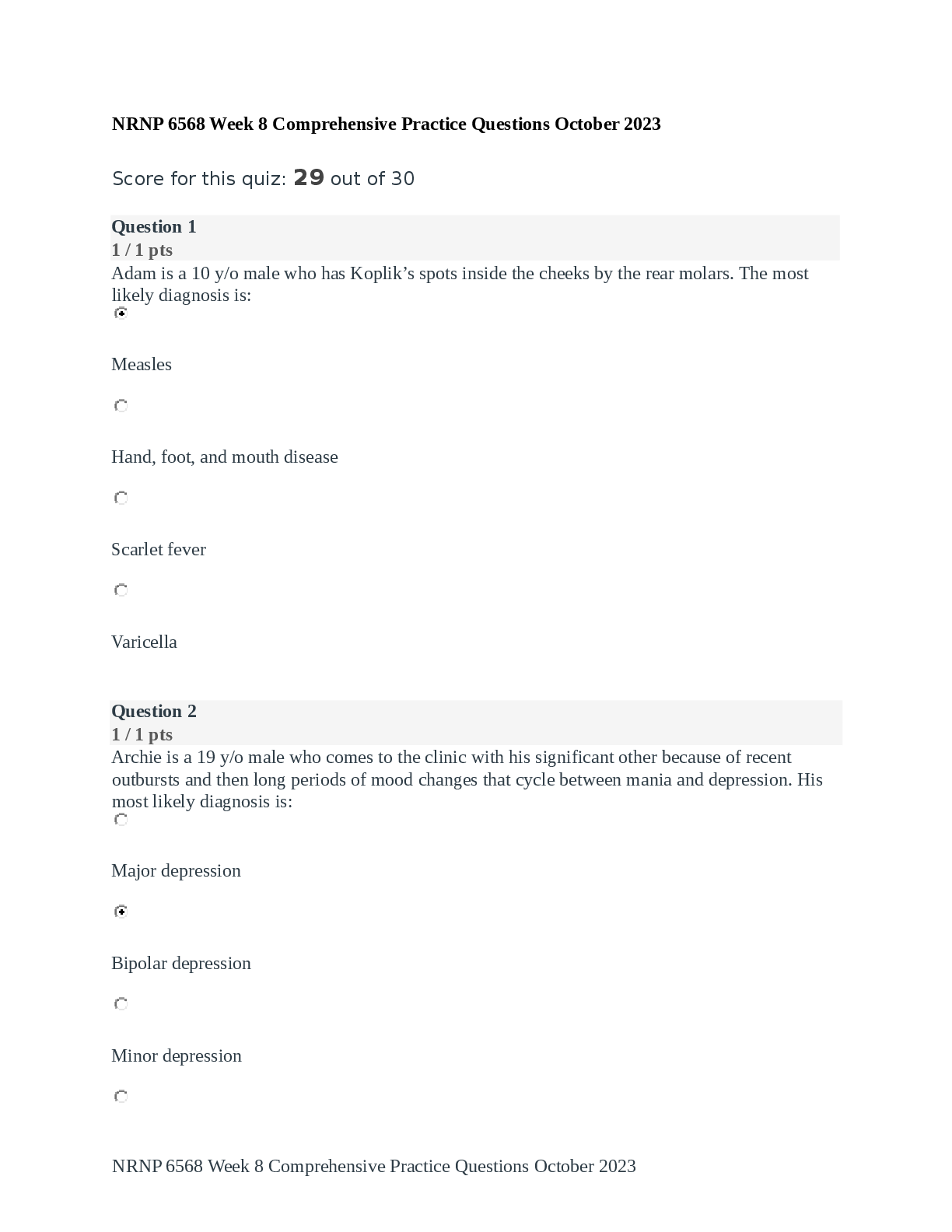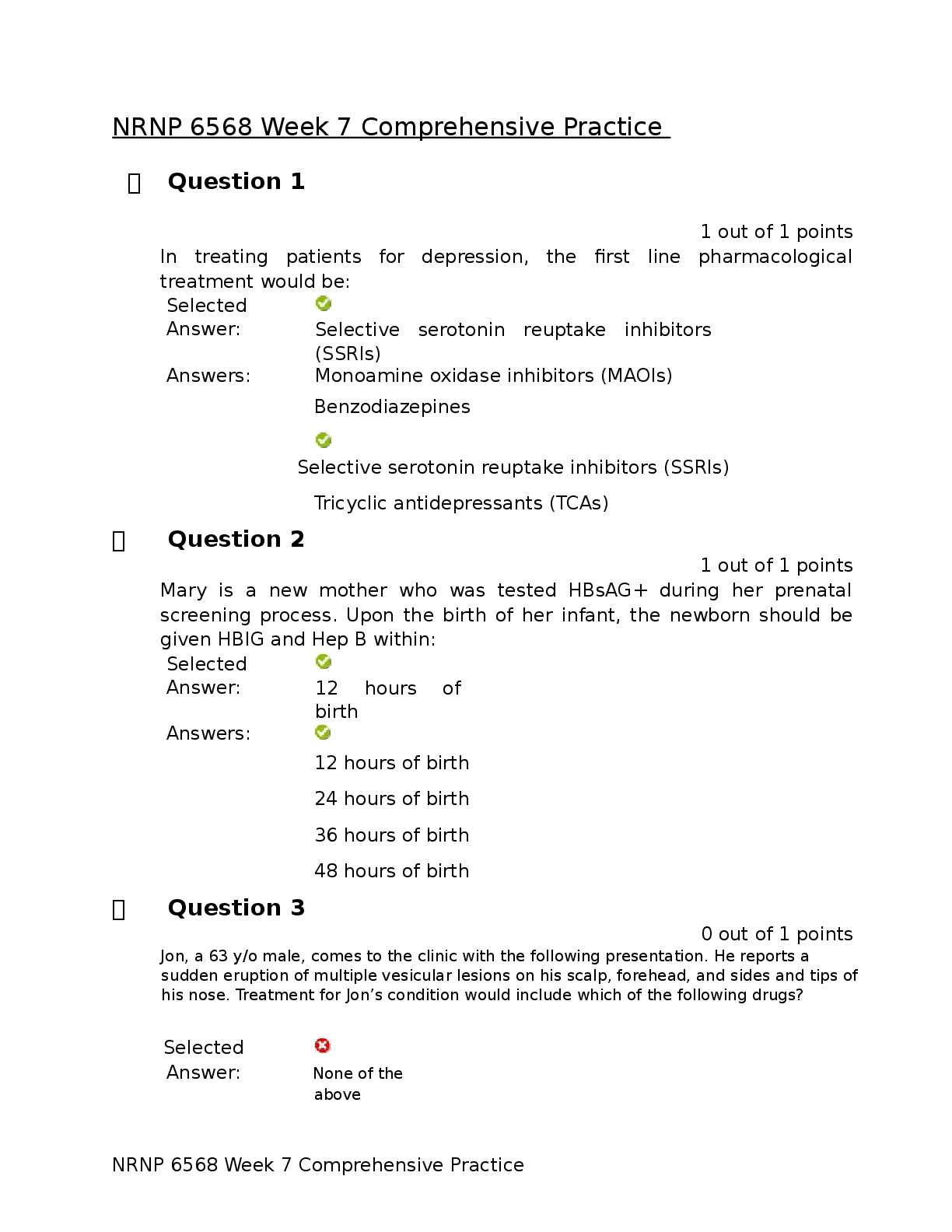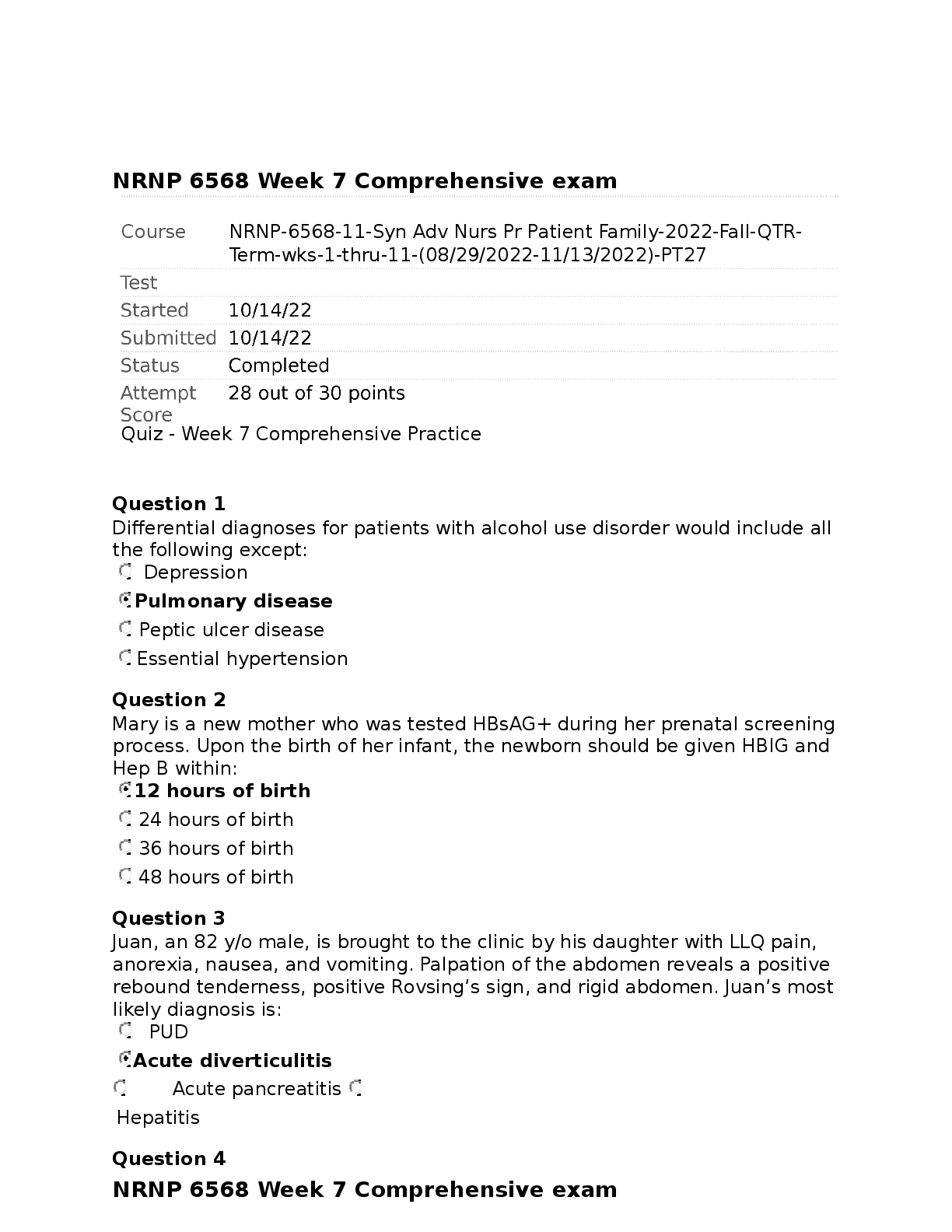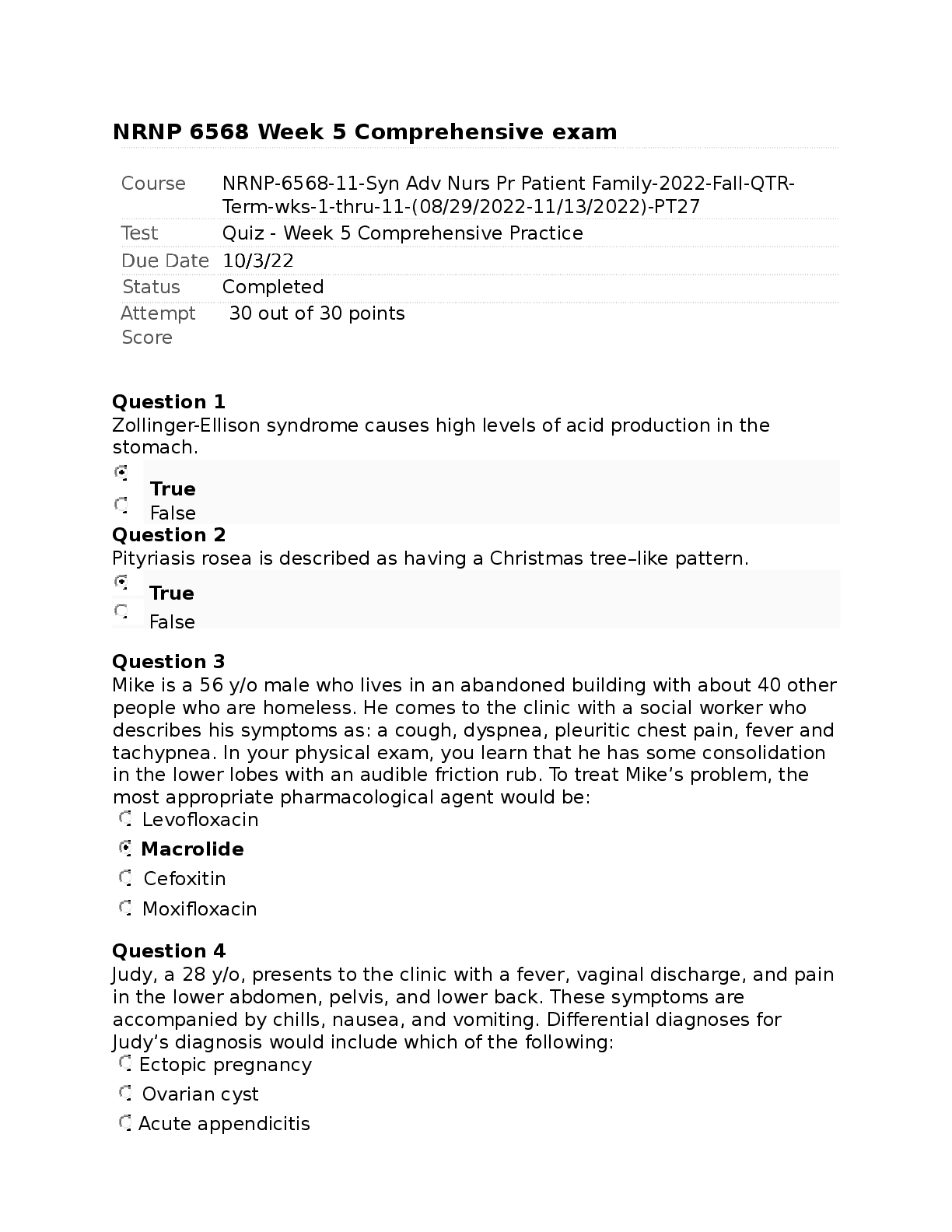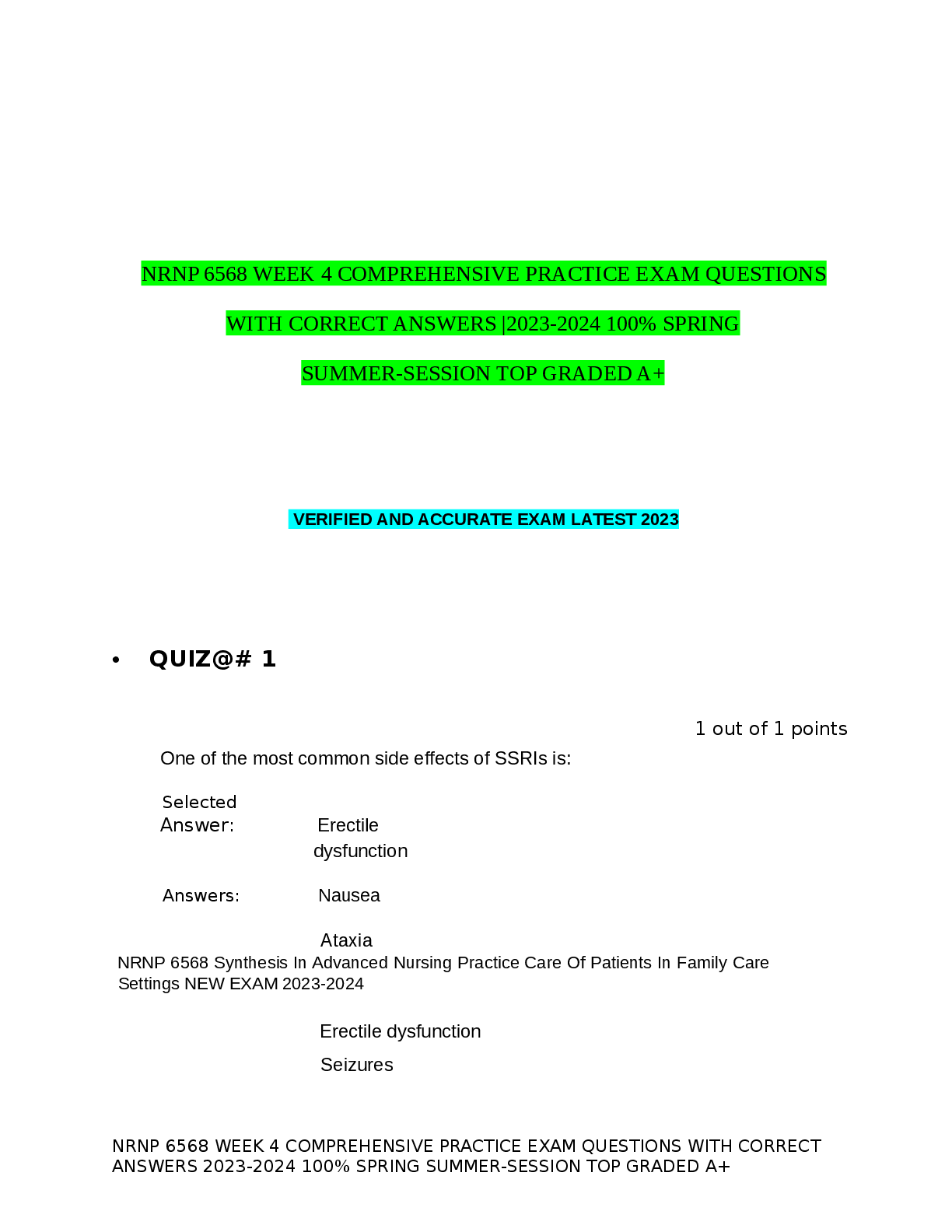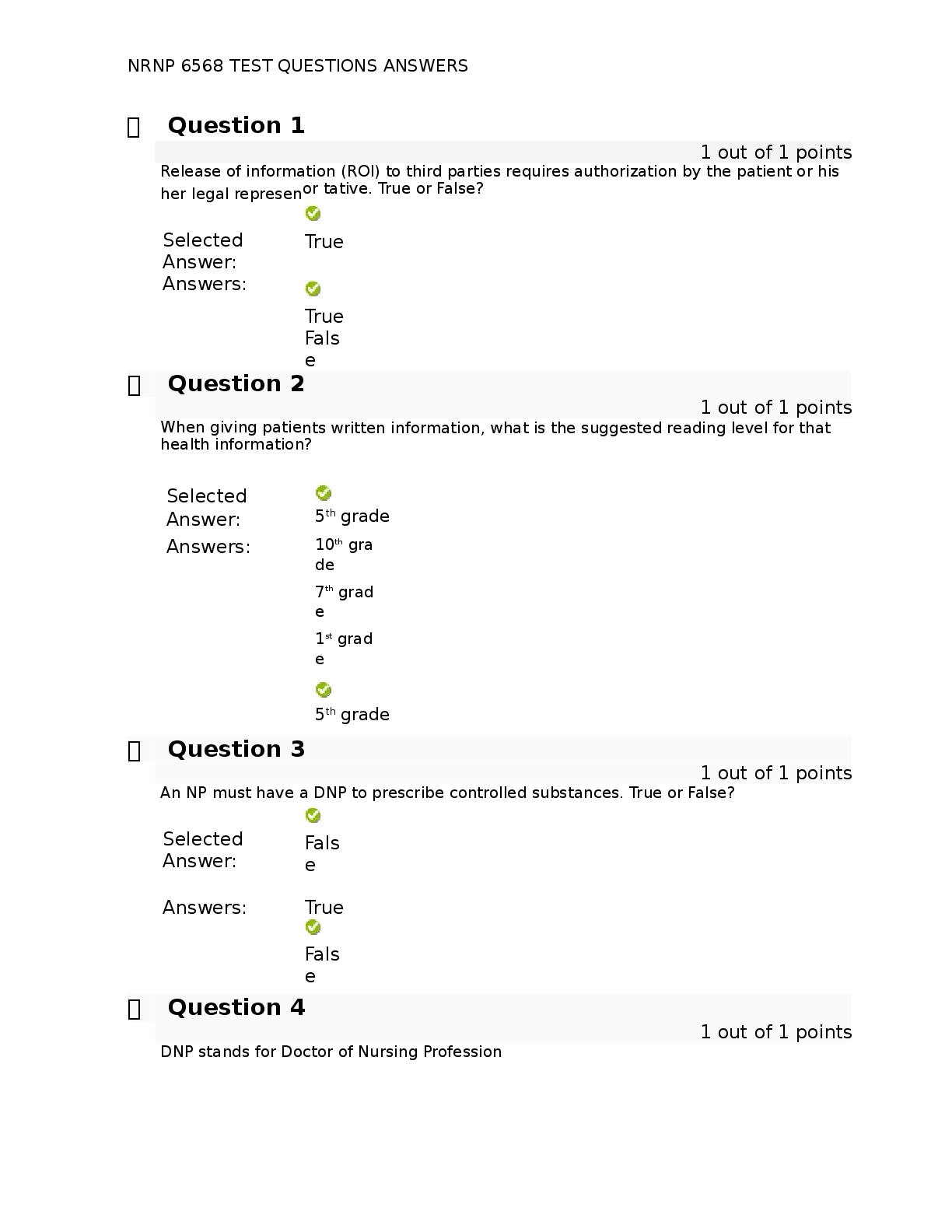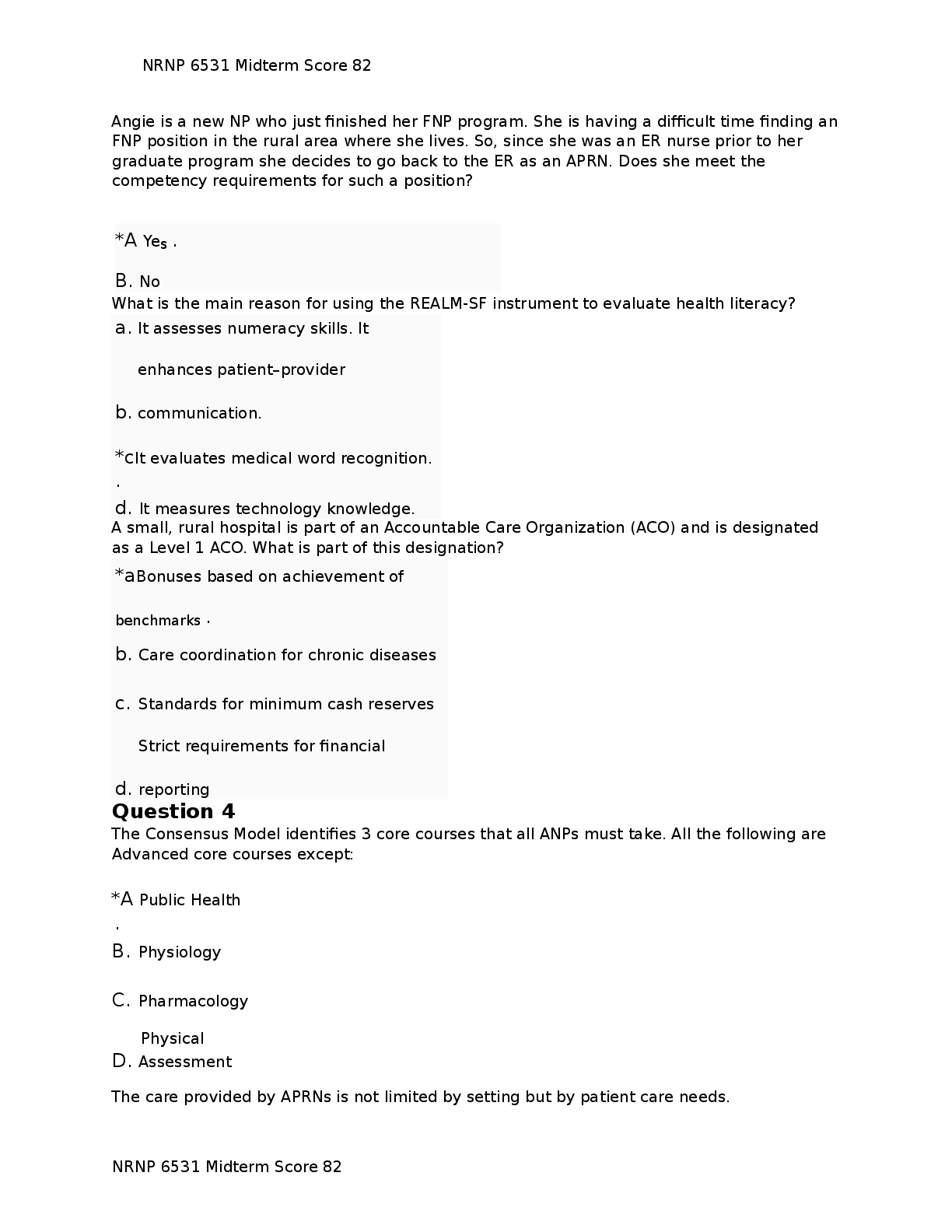343 Summer- Pediatric Assessment Lab Worksheet.docx/; COMPLETE SOLUTION
Document Content and Description Below
343 Summer- Pediatric Assessment Lab Worksheet.docx Instructions: o Complete the questions for each “station” as you review the online modules. o Initial the boxes that state your completion a ... nd sign at the bottom of that page. o Complete the Evaluation section. o Submit to Canvas in the submission spot titled “Pediatric Assessment Lab Worksheet”. - List at least 3 observations/interventions you can do to ensure that the room environment is safe. - Briefly describe the A, B, C components of Safe Sleep for infants: - Describe approaches for each age group when first entering the patient’s room, in order to gain trust. - Neurological Assessment: a. How can you tell that an infant is “neurologically appropriate”? b. Describe at least 2 infant reflexes that you can use in your neurologic assessment. c. What questions can you ask a toddler/pre-school child when assessing orientation to person/place/time? - Cardiovascular Assessment: a. What central pulses should you palpate when checking perfusion in an infant? b. What other signs do you check when assessing for adequate cardiac output? a. What are symptoms of respiratory distress in an infant? b. Identify the location of upper airway retractions. c. What can cause upper airway retractions? d. Identify the location of lower airway retractions. e. What can cause lower airway retractions? i. Infections ii. Asthma iii. aspiration - Abdominal Assessment: a. What might you find that is different on an infant abdominal assessment that you should not find on an older child, and if found on an older child, what could it indicate? i. A lot more digestive noises-bowel sounds ii. Infants have round bellies, if round and firm this is not good iii. Liver is 2 to 3 cm below rib cage - GI/GU Assessment: a. What are the important pieces of this assessment? i. Listen to bowel sounds ii. Intake and output (weighing diapers, emesis) - Skin turgor (elastic) - Mucous membranes (moist) - Tears - Musculoskeletal Assessment: a. How do you assess the musculoskeletal system on an infant? i. Make sure equally strong on both sides ii. Make sure they are moving all extremities iii. Palmer grasp iv. Side to side movement - Describe the 2 comfort holds that can be used during a procedure for toddlers through school- age? a. Kangaroo hold: Place your chin on the side of the patient that you do not want them to look, wrap arms around patient, put legs around child, works for toddlers to adolescents, typically for IVs. b. Bear hug: have patient wrap legs around you, keep face on side of cheek and hug the child with arms around. This frees an arm, and stops patient from bending elbow. - Describe the comfort hold can you use for the infant for a procedure? a. Swaddle Baby: restraint with blanket, place one arm in one side of the blanket, bring the bottom up and wrap the blanket around. This leaves one arm free for IVs, etc. - What are the 2 types of restraints that are commonly used for children? a. Kangaroo hold b. Bear hug c. Soft Velcro restraints i. Elbow cuffs - What 2 measurements, besides weight, will you do on an infant and why are these done? a. Head circumference b. Infant length i. This plots the child on the growth chart and the associated percentile the child fits in. - Explain how you can measure the height of a child that is too large for the length board but cannot stand up for the stadiometer. a. Segmental Length, measure in cm. i. Top of head to shoulder ii. Shoulder to hip iii. Hip to Knee iv. Knee to heel 1. Add all parts together to equal segmental length. - Use the least restrictive intervention that will still be effective. - Soft Velcro restraints use a quick release tie. - True or False (highlight the correct answer): If you take an elbow restraint off temporarily to care for a patient (and the patient is being supervised), it is considered a discontinuation and will require a new order to place it back on the patient. - You will need a new order every 24 hours for non-violent (non-behavioral) restraints. - Violent (behavioral) restraints are used because the patient’s behavior presents a serious and immediate danger to self or others. - You will need a new order for violent (behavioral) restraints every 30 minutes if the patient is 0-8 years old and every 60 minutes if the patient is 9 and older. - Repeat assessments every 2 hours while in violent (behavioral) restraints and patient will need to be observed at all times. - The last very important step is to post event debrief (this is not on the power point, but what do you think the answer should be?) Initial each box when completed to indicate that you have reviewed: Initials Pediatric Assessment Discussion (4 parts) LRK - Part 1: The Approach LRK - Part 2: A Safe Environment LRK - Part 3: System Assessments: Neurological, Cardiovascular, Respiratory LRK - Part 4: System Assessment: Abdominal, GI/GU, Musculoskeletal Therapeutic Comfort Holds LRK - Therapeutic/Comfort Holds power point LRK - Kangaroo Hold LRK - Bear Hug LRK - Infant Swaddle Restraints LRK - Restraints power point LRK - Restraints video Anthropometrics LRK - Infant length and Head Circumference LRK - Ped child Length **Don’t forget to submit this document in your Assignments under: Pediatric Assessment Lab Worksheet! Name: (print) _Lindsey Kuhn Name: (signature) Lindsey Kuhn PEDIATRIC ASSESSMENT LAB EVALUATION: ➢ What material from this lab was new to you? i. The material in this lab that was new to me was that patient identification is at times is allowed to be attached to the side of the bed. I also did not realize that for infants the liver is 2 to 3 cm below rib cage. ➢ What are your main take-aways (lessons learned) from this lab? - My main take-aways from this lab were the differences in assessments between infants and adults pertaining to the liver location. I did not realize that infant’s tears would be a way to evaluate fluid intake and output. Another take-away was how to locate upper and lower respiratory retractions. ➢ Do you feel that this lab helped you to understand some of the specific nuances of pediatric nursing? - I believe that this lab was helpful in illuminating some of the nuances to pediatric nursing. Particularly the infant population as I currently work with 4-17 year olds at Nationwide Children’s and I do not have experience in that area. [Show More]
Last updated: 3 years ago
Preview 1 out of 6 pages

Buy this document to get the full access instantly
Instant Download Access after purchase
Buy NowInstant download
We Accept:

Reviews( 0 )
$16.00
Can't find what you want? Try our AI powered Search
Document information
Connected school, study & course
About the document
Uploaded On
Jul 16, 2021
Number of pages
6
Written in
All
Additional information
This document has been written for:
Uploaded
Jul 16, 2021
Downloads
0
Views
45


